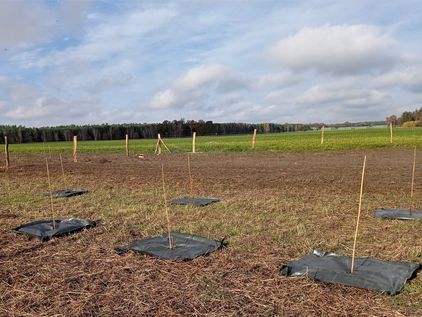

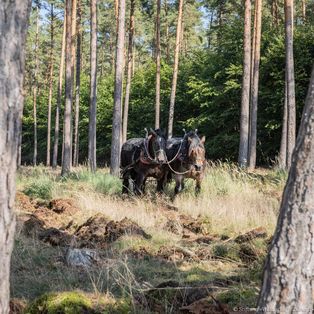
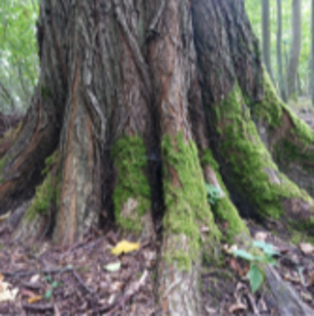
2023 Brandenburg Reconstruction of the foundation forest Project management Wilfried Hälker
The long way to a natural mixed forest
This year around 10,000 trees were planted again in order to get closer to the goal of a healthy mixed forest. Motivated by experience and the reduction of the wild population, we were able to decide to leave a large part of the forest area to nature in order to activate the self-regulating ability of the ecosystems on our land. Dead wood, branches and valuable habitat trees remain in the forest and promote biodiversity. This is an important step towards the health of our foundation forest.
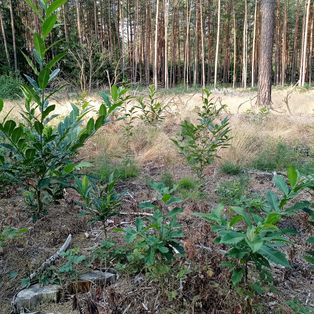
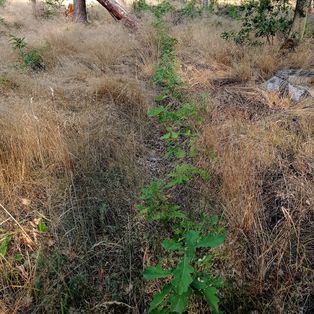


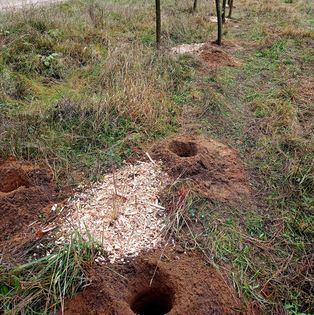

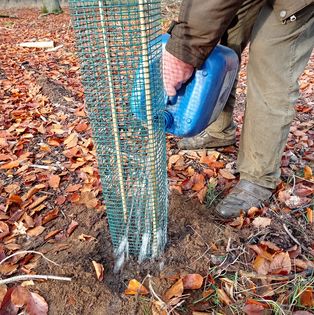
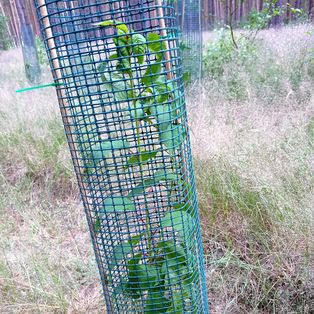
2022 Conversion of the foundation forest into a semi-natural permanent forest - project manager Wilfried Hälker
Redesign of the foundation forest
The fundamental transformation of the foundation forest, which began in 2020, into a natural mixed forest structured like a permanent forest, will be consistently continued in 2022.
This includes further deciduous tree plantings in autumn (12,500 climate-adapted deciduous trees, some of southern European origin), as well as the consistent hunting of the game population, which is still too high.
The necessary cultural measures, e.g. encircling and freeing desired tree species, were carried out, as well as single tree plantings of rare tree species with individual browsing protection.
The construction of about 50 nest boxes for cave and niche breeders as well as some bat boxes is planned for autumn. The hoopoe found in the foundation forest should also be helped with nesting boxes. After hanging the nest boxes, the locations are mapped for retrieval (annual cleaning).
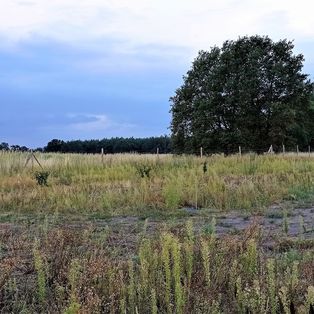
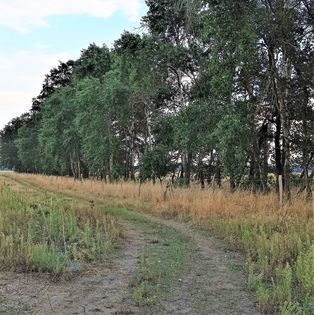
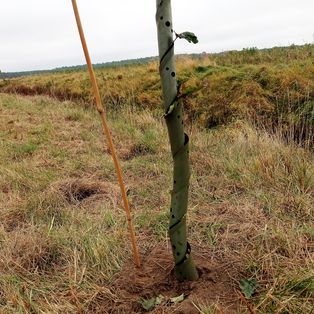
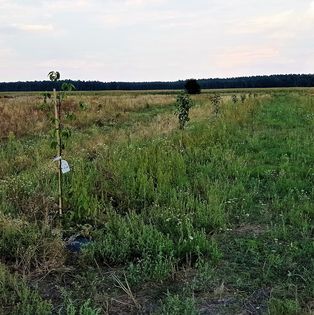
2022 biotope networking
The biotope networking that started in autumn 2021 was continued in spring 2022 by planting different trees. Despite irrigation, the extremely dry and hot weather since April has led to significant failures. Therefore we will replace the lost plants in autumn 2022.
In the next year, public relations and educational work will be carried out in cooperation with Stattwerke e.V. An observation platform and 4 information boards on the subject of forest gardens (construction, insects, nutrition) should be built.
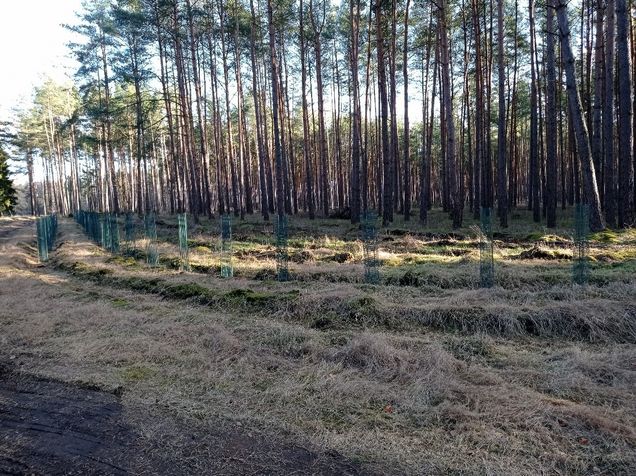

Working in the foundation forest 2021
Conversion of the foundation forest into a natural mixed forest. Project manager Wilfried Hälker
In spring 2020, the foundation's committees decided to convert the foundation forest from a plantation-like age-class forest into a near-natural, permanent forest-like, richly structured mixed forest. This restructuring process will take decades. We have already implemented a number of measures this year:
Planting of avenue trees with climate-adapted tree species
The forest paths in the foundation forest will be continuously widened in the future and upgraded with ecologically valuable fruit and deciduous trees in the shape of an avenue.

Thinning of approx. 6 hectares of the foundation forest in preparation for autumn planting in 2021
The aim of this measure is to reduce the degree of tillering in order to bring light to the forest floor and to create planting areas for hardwood and natural regeneration.
This autumn the tree species beech, red oak, sycamore maple, winter linden, hazel tree, chestnut, service tree and service tree will be planted.
If suitable seeds can be obtained, we will sow red oak, chestnut and walnut on trial plots.
In order to help natural regeneration, sowing and planting - even without a fence - to be successful in the future, we have changed the hunting strategy in part of the foundation forest. The aim is to reduce the hoofed game population at least temporarily to a level that is compatible with nature.

Wild fruit meadow on parts of a previous forest meadow in 2021
The planting of native wild fruit trees and other tree species should take place in autumn. The measure is supported by the association Re: Generation e.V., whose members will implement the planting on site. The planting of a total of 180 drought-resistant tree species such as B. Common apple, cornel cherry, rock pear, wild plum, bird cherry, sweet chestnut, real walnut, black walnut, and common hazel.
Biotope networking 2021
In autumn, together with the “STATTwerke eV” association, we will create a biotope network between two ecologically important forest areas by planting wood. The “ecological bridge” will be approx. 1 km long and 20 m wide. It interrupts a large-scale cleared arable landscape. The network of biotopes should basically serve nature conservation purposes, but also serve the production of food. Selected native wild trees are to be planted which, on the one hand, offer all the ecological niches necessary for a biologically diverse ecosystem and, on the other hand, produce a yield of fruits, vegetables and herbs at the same time. An insect meadow and a wet biotope should also find their place.
Examples of woody plants to be used include: Hazelnuts, walnuts, butternuts, apples, pears, wild plums, sloes, sea buckthorn, rowan berries, service trees, cornel cherries. In addition, key ecological species such as willow, gorse, alder and field maple are planted. The underlying concept, which combines nature conservation and agriculture and forestry, is called the forest garden system.
The local population is involved in the project through joint planting campaigns and educational offers for children and young people.
The effectiveness of the "ecological bridge" will be proven in the next few years by data recordings from an entomologist regarding the occurrence of butterflies, bees and ants. Larger animal species should be detected using photo traps.
road construction 2021
A project for the people close to us
For forest fire protection, but also for better accessibility of the foundation forest for those interested or those looking for relaxation, the expansion of the main forest paths over a length of 2,680 meters is funded by the European Agricultural Fund for Rural Development.
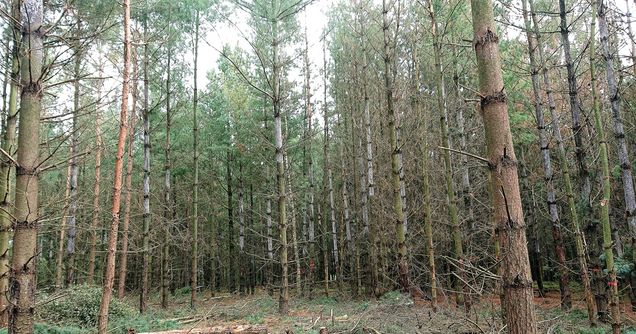
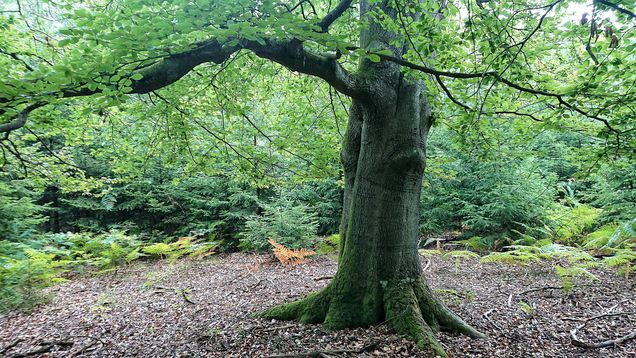

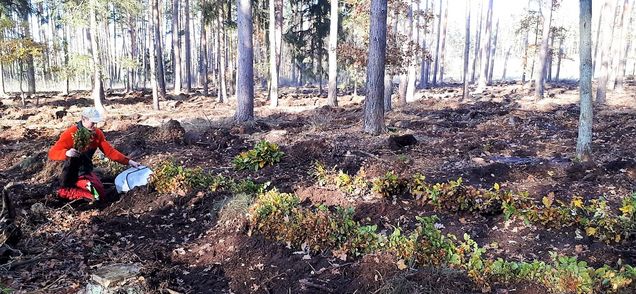
2020 Conversion of the foundation forest to a near-natural forest Project management Wilfried Hälker
In August 2020, the foundation forest was enlarged and rounded off by a further donation of forest areas in the size of 91.2 hectares. This means that the foundation has grown considerably in terms of area and profitability. That's the good news! Unfortunately, the effects of climate change (drought, storms and subsequent bark beetle infestation on the weakened trees) are becoming increasingly evident. As a result, the foundation's board of directors has decided to transfer the foundation forest from the age-group forest to a natural, permanent forest-like mixed forest. We want to move away from wood plantations and towards a stable, mixed forest of different ages.
We have had external forest experts draw up a concept with which we can achieve our goal in the next few years. With the forest conversion, we are simultaneously pursuing the foundation's purpose of promoting environmental protection. The following measures will be incorporated into our forest conversion project:
- Single tree plantings - rows of avenues, inner forest hedges,
- Renaturation of wet sites
- Establishment of forest edge structures, landscape-defining hedges in open landscapes, flower strips, insect meadows,
- Preservation of old trees, deadwood and woodpecker trees,
- Spreading nest boxes, breeding caves and bat boxes,
- Networking biotopes by planting native tree and shrub species.
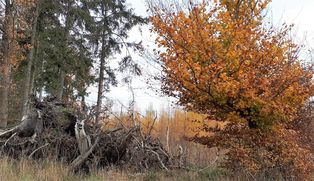
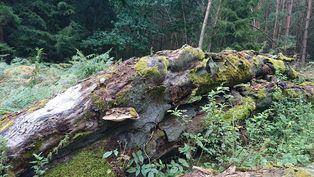


Around 30,000 deciduous trees will be planted in the foundation forest in autumn 2020. We will respond to the changing climatic conditions with sycamore, sessile oak, hornbeam, red beech, winter linden, locust, red oak and sweet chestnut. But it is also about the preservation and protection of the already existing near-natural forest areas. A beautiful example of near-natural forest can be found in a section of forest in the foundation forest that has been untouched for many years. The area is criss-crossed by a wide variety of conifer and deciduous tree species. Birds, predators and rodents, but also amphibians, lizards and a multitude of insects that are seldom found in the pine forest find their habitat here.
In the future, we will regularly report on silvicultural and environmental protection measures to increase the biodiversity of flora and fauna.
2019 Change of Forestry strategy - Project Manager Wilfried Hälker
Major project: Foundation Forrest in Brandenburg
More and more trees and whole forest areas are dying off in Germany. Everywhere a dead wood areas. That were previously unknown. The forest image is terrifying as a result of storms, droughts and high temperatures and climate change. The trees are sick and no longer resistant. Storms and subsequent bark beetle infestations have contributed to this disaster.
In the foundation forest it does not look different. The only slightly existing spruce stands are affected by the bark beetle and must be removed quickly. The pine as our "bread tree" suffers as well as beech and oak under the drought. More and more trees are dying.
Our forest is not the only factor to stabilize the climate. But he contributes to it. As a moisture storage and -donor, wind blocker and CO2 converter, one of the most important livelihoods for all of us. Therefore, our forests must be reforested as soon as possible. In addition, arable land should be reforested with healthy mixed forest, and arable land should be breached by hedges and flower strips. That´s what our foundation has to do within the next years.
We hope that the national catastrophe "Forest Dying" can be effectively counteracted. In the meantime, irreversible damage has been detected.
The forest owners should be helped by funding to quickly repair the damage incurred and to re-establish healthy mixed stocks. The forest must be preserved with its many functions for man, nature and the environment. Exactly what we should do is perceive and act decisively and effectively!
Forest creates future will adapt its foundation forest as well as possible to future climatic changes. It is a multi-generational task for which we already have to provide and secure financing and guidance today. This will be the primary task of the next few years. As soon as the first project plans and actions are available, we will report on this.

